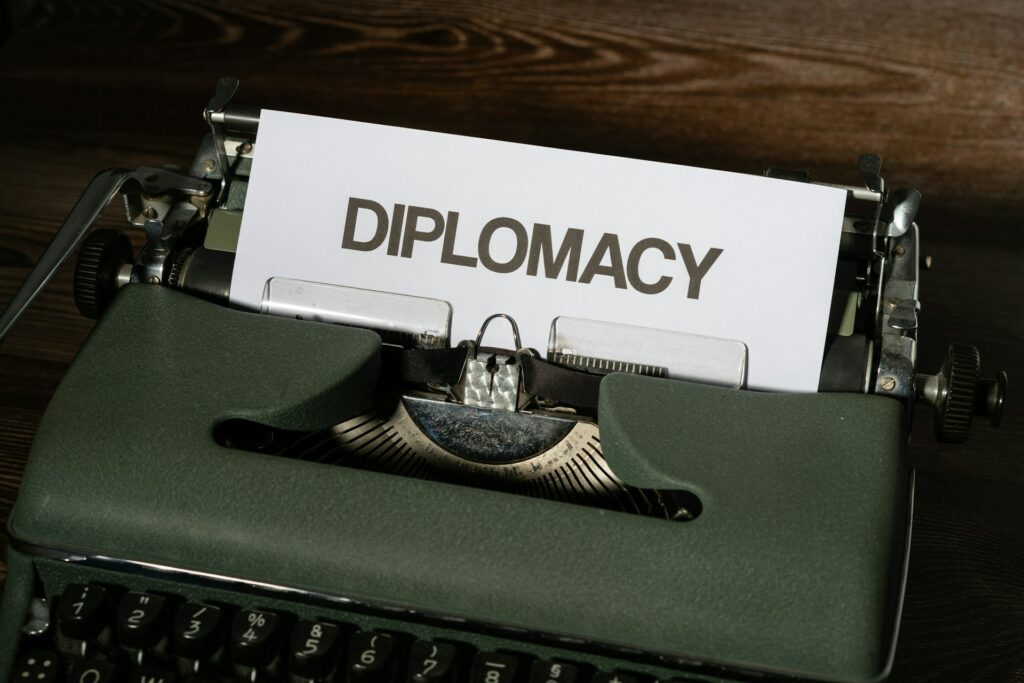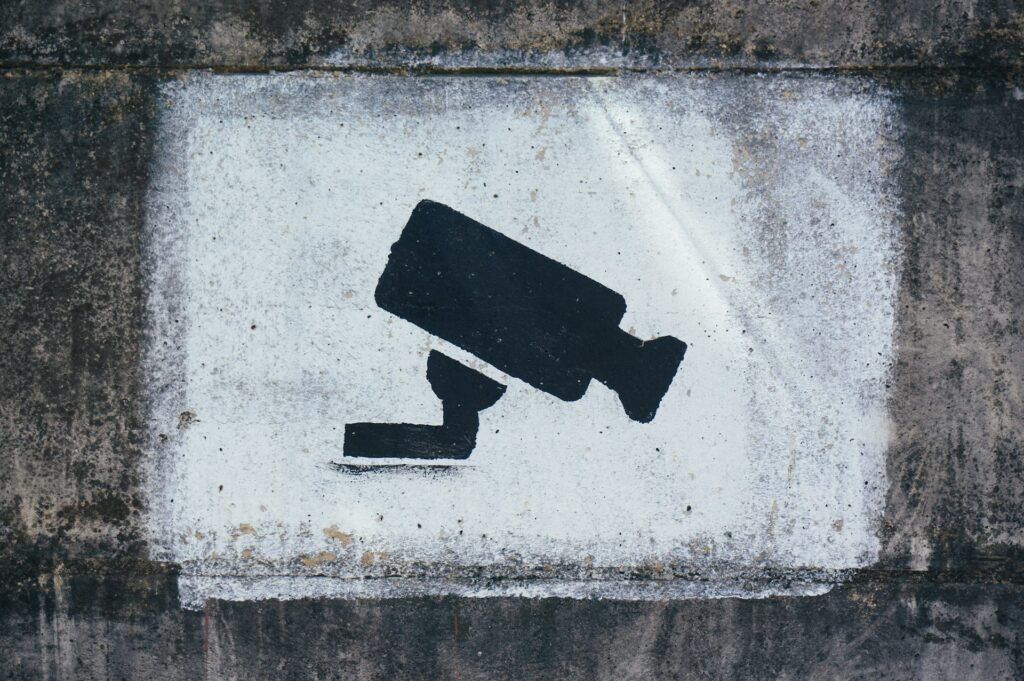Intro
Government communication has become more vital than ever in our fast-paced, digital age. The public demands transparency, accountability, and responsiveness from those in power. This creates a daunting task for those in charge of disseminating information.
This article sheds some light on the complex world of government communication. It reveals its various aspects, challenges, and future.
The Art of Diplomacy in Government Communication

Diplomacy – it’s a subtle dance that unfolds in the corridors of power and echoes in the public arena. It forms the foundation of government communication. It requires finesse, respect, and an unerring knack for negotiation. Government communicators play the role of diplomats. They defend their nation’s interests, address international conflicts, and forge new alliances. They balance their words and actions.
But what does it mean to be diplomatic in government communication? It’s more than just being polite. Diplomacy involves:
- Understanding the intricacies of cultural context.
- Recognizing the subtleties of language.
- Appreciating the power of timing.
It’s about not just speaking but also listening; not just asserting, but also conceding.
A single misplaced word or ill-timed statement can escalate into a diplomatic incident. A carefully constructed message can bridge differences. It can also lay the foundation for cooperative relationships. Such is the power and peril of diplomatic communication.
However, it’s not all about the international stage. Diplomacy also applies to internal communication. It unites different departments, coordinates efforts, and fosters a sense of shared mission. It’s about managing conflicts, ensuring alignment, and building consensus within a complex, often fragmented, government structure.
In this ever-evolving global landscape, diplomacy is no longer confined to closed-door meetings and official communiques. It’s taking place on social media. It’s in news websites’ comment sections and the vibrant exchanges of blogs and podcasts. Digital diplomacy has entered the arena. It presents fresh opportunities and novel challenges for government communicators.
The art of diplomacy in government communication is a tightrope walk. It teeters between assertiveness and respect and transparency and tact. Yet, those who master this balancing act can influence not only the perception of their government but also the course of their nation’s history.
Public Relations and the Government

The public relations (PR) machinery is a crucial cog in the dynamic interplay of governance. PR professionals within the government, much like their counterparts in the corporate world, have an equally significant mandate. Their role, however, extends beyond mere storytelling. It includes painting an accurate, compelling image of government operations. It promotes understanding of public policies and engages citizens in meaningful dialogue.
At its core, government PR isn’t about marketing products or services. Instead, it’s about forging an authentic relationship with the citizenry. It’s also about establishing the government as a trusted entity. It’s about transparency. The government’s actions and intentions should be understood and appreciated. This trust-building exercise isn’t just about image. A healthy democracy needs to function well.
Government PR professionals also take the reins during times of crisis. These individuals are at the forefront when emergencies strike, disseminating accurate, real-time information. They soothe public fears, coordinate response efforts, and keep the lines of communication open between government entities and the citizenry. In high-pressure situations, a skilled PR professional can make a difference. They can turn a potential PR disaster into an example of effective, empathetic leadership.
Public relations in the public sector is about more than spin. It’s a multi-faceted role. It encompasses everything from brand management, crisis communication, public engagement, and policy promotion. Government PR professionals are critical conduits. They bridge the gap between the government and the governed. They weave resonated narratives, manage the government’s brand image, and chart the course through crises. Their work forms the backbone of an open, accountable, and responsive government. Not only does it speak, but it also listens, understands, and acts.
The Role of Media in Government Communication

The Dual Role of Communication in Shaping and Reflecting Public Discourse
The media is a crucial player in government communication. It orchestrates the exchange of information between government and citizens. This robust channel doesn’t just echo the government’s voice. It adds its melody, creating a symphony that informs, engages, and empowers the public. Media disseminates the narratives shaped by the government. It does so from the grand stages of traditional newspapers and television networks. It also does so from the digital podiums of social media and blogs.
However, the role of media extends beyond being a mere conduit for government messages. Its function is dual – it’s a projector and a mirror. It broadcasts government policies, initiatives, and viewpoints to a broader audience as a projector. This amplifies the reach of these messages. As a mirror, it reflects public sentiment back to the government. It offers insights into public opinion. It also adds depth to the feedback loop of communication.
Navigating Challenges, Cultivating Partnership, and Shaping Democratic Discourse
Still, the relationship between the government and the media is intricate and layered. It isn’t a monologue but a dialogue, a dynamic interplay of perspectives, interests, and influence. The media is a watchdog. It scrutinizes government actions, asks tough questions, and holds the government accountable. It keeps a check on the government, ensuring transparency and integrity.
Yet, this interaction is full of challenges. Navigating the media landscape requires careful negotiation from government communicators. Coverage must be earned without compromising control. The government must align its need to control its message. The media is independent.
In government communication, media is not just a tool; it’s a partner. It’s a catalyst that can help shape public opinion. It can influence policy outcomes and impact the trajectory of governance. When navigated effectively, this partnership can strengthen democracy. It can also foster an informed citizenry. It can build a bridge of understanding between the government and the governed. The media’s role in government communication is indispensable and transformative. It is the medium through which voices and stories are heard.
Crisis Communication and Government

Navigating Challenges and Fostering Resilience
In the face of adversity, communication becomes the government’s lifeline. It unites its people, directs response teams, and dispels panic. Crisis communication in government circles involves much more than breaking bad news. It is an orchestrated effort to manage information flow accurately and swiftly. The goal is to curb rumors, maintain public morale, and lead the way toward recovery.
Governments are thrust into the limelight when calamity strikes, such as a natural disaster, a violent act of terror, or a public health emergency. The public and media scrutinize their response. Effective communication during critical times can make the difference between chaos and order. It can also make the difference between despair and hope.
Central to crisis communication is the dissemination of timely and reliable information. However, the task extends beyond providing facts and figures. It also involves managing the public’s emotions. It alleviates fears, fosters unity and resilience, and inspires confidence in government actions. Missteps in crisis communication can fan the flames of uncertainty and mistrust. They could worsen the crisis at hand.
The Role of Government Communication in Recovery and Rebuilding
Government communicators coordinate communication across various agencies involved in crisis response. This coordination effort ensures that messaging is consistent. It reduces confusion and strengthens the overall impact of the communication.
Another critical aspect of crisis communication in the government arena is post-crisis messaging. Once the immediate threat has subsided, governments must lead the narrative towards recovery and rebuilding. They must communicate plans for restoration, reassure the public of the return to normalcy, and reflect on lessons learned to better prepare for future crises.
Indeed, crisis communication can be seen as a test of a government’s efficacy, transparency, and empathy. Its significance in government communication cannot be overstated. As governments navigate this critical domain, they must remember that their words and actions can shape the public’s perception of their leadership. Ultimately, this affects the public’s trust in the government’s ability to guide them through tumultuous times.
The Challenges of Government Communication

Government Communication in the 21st Century
Navigating the terrain of government communication is a challenging task. The field is riddled with obstacles and complexities. It demands a unique blend of skill, tact, and perseverance. The public sector is an intricate maze. It presents glaring challenges. Picture a labyrinth of departments, agencies, and varying levels of government. All function in harmony, yet each has its distinct agenda and mode of operation. Imagine the arduous task of synchronizing communication across this vast network. It ensures a seamless, cohesive narrative.
Next on the list is the delicate tightrope walk between transparency and security. On one hand, the public clamors for openness. They hold their leaders to account. They demand insight into the workings of their government. On the other hand, there is a pressing need to safeguard sensitive information and maintain national security. Striking the right balance requires a deft touch and a keen understanding of both realms.
Enter the digital age, and the challenges multiply. In this fast-paced era of tweets and posts, governments struggle to deal with the rapid spread of misinformation. They are also dealing with the shifting sands of public opinion. They face constant demand for instant responses. The digital realm is a double-edged sword. It amplifies the government’s reach and facilitates two-way communication. However, it also opens the floodgates to a deluge of unverified information and volatile public sentiment.
Navigating Demographic Diversity, Scrutiny, and the Complex Landscape of Public Discourse
Adding to these hurdles is the issue of differing demographics. Crafting a message that resonates across varied age groups, cultural backgrounds, and socioeconomic statuses. Tailoring communication to the diverse tapestry of the citizenry is an art. It requires cultural sensitivity, inclusivity, and adaptability.
Finally, there’s the challenge of constant scrutiny. Every word uttered, and every message relayed is under scrutiny. The government has the potential to spark public discourse, incite criticism, or ignite praise. Living under this magnifying glass requires resilience. It also needs humility and a commitment to truth and accountability.
Indeed, the path of government communication is strewn with challenges. Yet, these very challenges make the journey all the more intriguing and rewarding.
The Power of Listening in Government Communication

In the intricate ballet of government communication, the act of listening is as pivotal as the art of speaking. The rhythm of public sentiment and the pulse of citizen concerns create the symphony. The harmony of societal aspirations completes it. Governments must attune themselves to it. This requires active engagements, such as conducting public polls and facilitating community discussions. It also includes subtler, passive aspects. These include scrutinizing social media trends and dissecting public opinion data.
Listening is not merely an auditory exercise; it is an empathetic endeavor. It calls for governments to understand the heartbeat of their citizenry. They need to comprehend their hopes, fears, and dreams. Such engaged listening can illuminate the path for policy formulation. It can also shape the tone of communication strategies. Ultimately, it can bolster the credibility and legitimacy of the government.
Embracing the power of listening can transform government communication from a one-way megaphone into a two-way dialogue. It ensures that the citizenry’s voice is heard, acknowledged, and acted upon. It shifts the paradigm from a government that tells to a government that listens, transforming monologues into meaningful conversations.
In government communication, listening isn’t a passive act – it’s an active endeavor. Governments must go beyond their offices. They must listen to people talking on the streets, corners, and rooftops. In this context, listening means giving a voice to the voiceless. It also means offering a platform for the unheard. It empowers citizens to partake in their governance.
In essence, listening embodies the very spirit of democracy. It underlines the government’s role as a speaker and an attentive audience to its citizens’ voices. It paves the way for a more inclusive, participatory, and empathetic government communication. This embodies the ‘for the people, by the people, of the people’ ethos.
The Future of Government Communication

Technological Frontiers Reshaping Government Communication in the 21st Century
As we journey into the heart of the 21st century, we find ourselves on the cusp of a revolution in government communication. Digital advancements are meeting public governance. An array of technological marvels stands poised to reshape how governments communicate. They range from the alleys of artificial intelligence to the corridors of virtual reality.
Artificial intelligence processes massive amounts of data swiftly and accurately. It could gauge public sentiment with an unprecedented level of precision. Government communicators can use this deep data dive. It can help them tailor their messages more effectively. It can also help them respond more rapidly to shifting public opinion. This could herald a new era of hyper-responsive governance. The public’s voice could resonate in the corridors of power in real time.
In the virtual realm, the immersive experience of virtual reality holds the potential to redefine public consultations. Imagine citizens stepping into a virtual town hall. They discuss, debate, and even experience proposed government initiatives firsthand. This technological wizardry could transform public consultations from passive listening exercises. It could change them into engaging, interactive experiences. It could bridge the divide between the government and the governed.
Navigating the Digital Landscape in Government Communication
The digital age is accelerating. The public is demanding more transparency, which means more active participation. The rise of social media and digital platforms presents both a challenge and an opportunity. It opens up new avenues for two-way communication and citizen engagement. However, it also calls for heightened vigilance against the spread of misinformation.
In navigating this digital landscape, the key for government communicators lies in balance. They must harness the power of these technological tools. They must keep sight of the human connection. It lies at the heart of government communication. Government communication is about forging an authentic, empathetic bond between the government and its people.
The promise is evident as we stand at the threshold of this brave new world of government communication. By embracing these digital advances and retaining our commitment to transparency, empathy, and responsiveness, we can usher in an era of government communication. It embodies the spirit of a government ‘of the people, by the people, for the people’.



